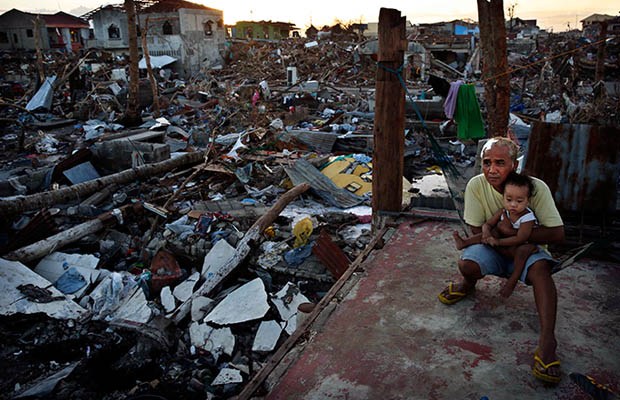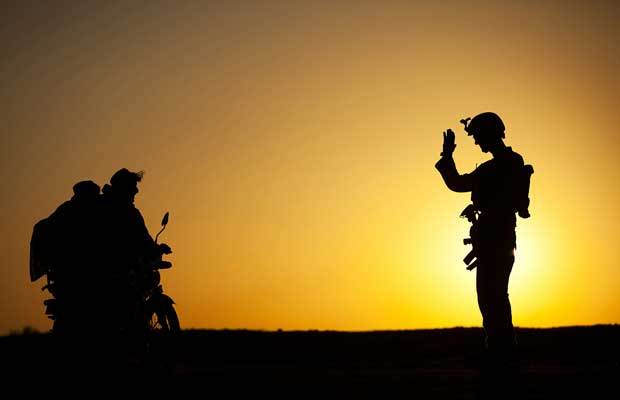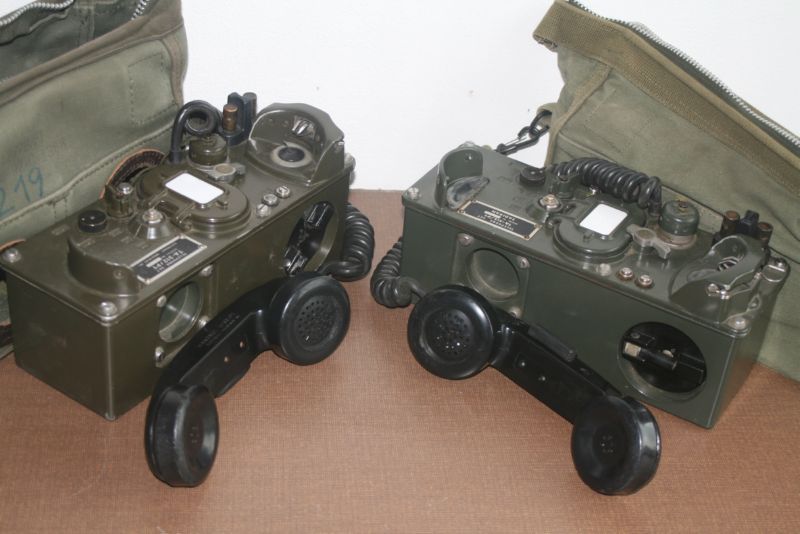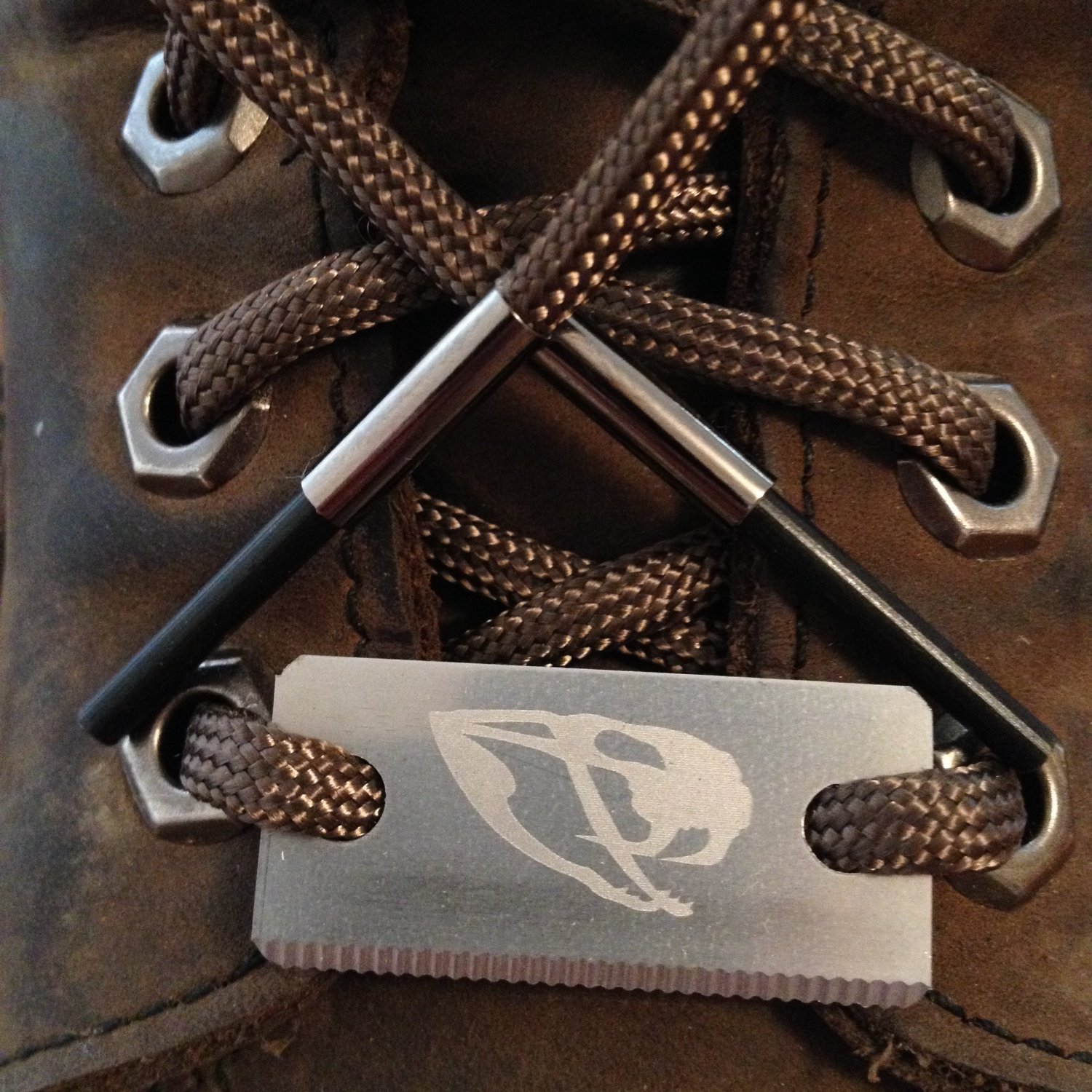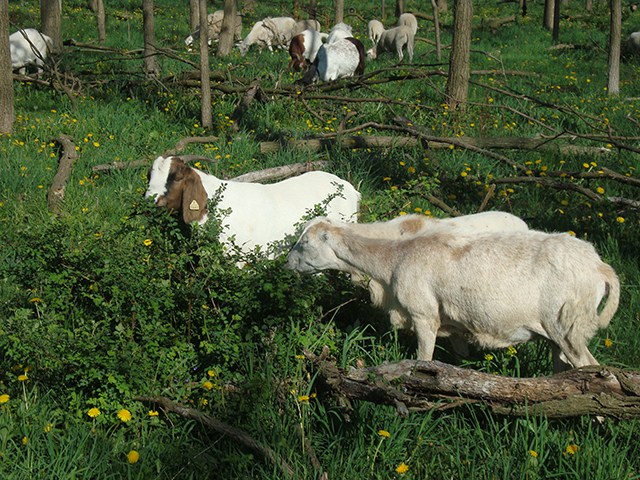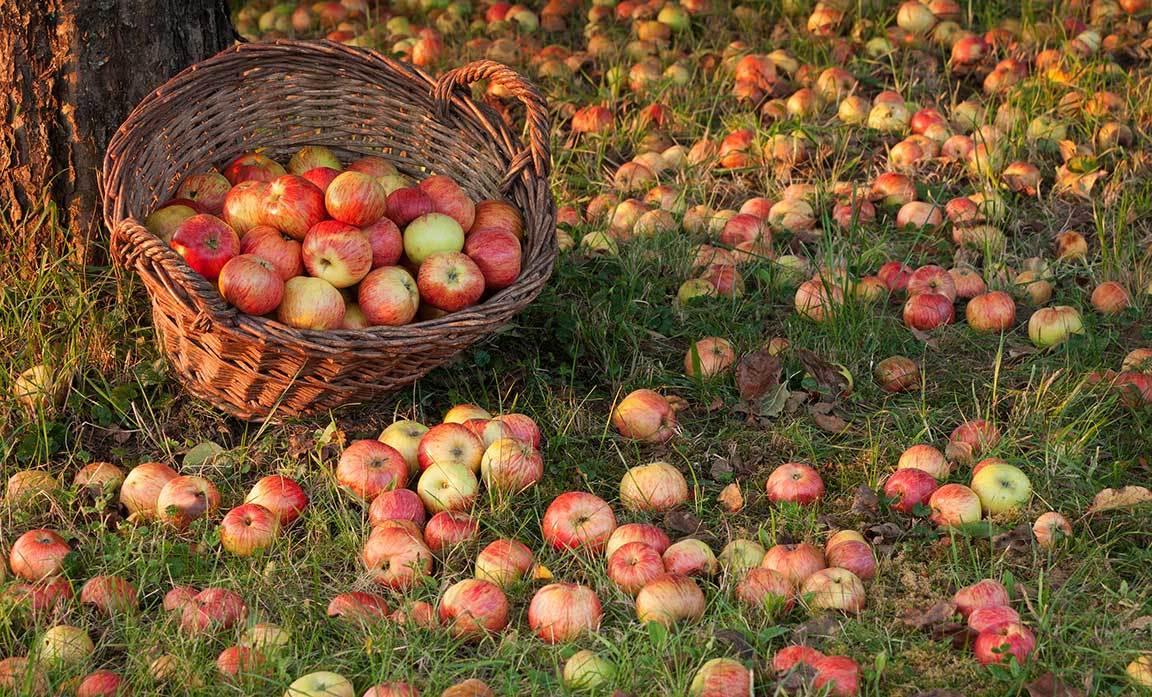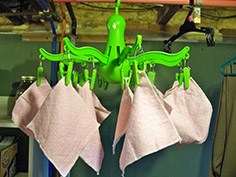Defensive Tactics When Under Fire
Introduction
DISCLAIMER: This article in intended to provide basic information regarding defensive tactics to preppers who are new to the subject. Those with a military background or other advanced knowledge in tactical maneuvers are referred to more advanced treatments of the subject, such as the excellent book ‘Contact! A Tactical Manual for Post Collapse’ by Max Velocity.
The tactics discussed here are purely from the perspective of group and community defense, and are limited to tactics that would apply to active-defense situations.
Tactics are defined as “the art of disposing armed forces in order of battle and of organizing operations, especially during contact with an enemy”. While authoring my preparedness book (“When There is No FEMA“) I covered the topic of using classic military tactics in post-SHTF situations. This was a natural extension of the treatment I had already given to guns and ammunition. (After all, what good is having a gun for defense if you don’t know how to apply it effectively?)
Recently, while viewing the excellent movie ‘Lone Survivor’, I came to realize exactly how important and pertinent the topic of defensive tactics is to the prepper/survivalist. As I watched the portrayal of those special forces soldiers being pursued by the Taliban across the rough, forested hills of Afghanistan I could not help but relate those scenes to the tactics I had covered in my book.
That realization of the importance of defensive tactics was further reinforced by recent social unrest in and around Ferguson, Missouri. From the news coverage of happenings there we have observed groups of loosely organized looters literally shooting their way into buildings. If and when a large-scale disaster strikes on a national level, and when pure hunger is the motivator, it is logical to infer that such violence will be acted out with much greater intensity, and almost certainly with less intervention by law enforcement.
SIDE NOTE: Many years ago I had a roommate who had dedicated his life to the pursuit of martial arts. One piece of advice he gave me that I have never forgotten was that one should always be imagining potential threats and vulnerabilities such that, when an attack materialized, one would be preconditioned to react instantly. Needless to say, this bit of wisdom applies as much to group defensive tactics as it does to hand-to-hand combat.
The corollary to this advice is that a survival group should conduct regular drills and have regularly scheduled training sessions.
Terminology
Effective communications is essential to being able successfully carry out tactics, and communications benefits greatly from adopting a common vocabulary. The following are some common terms related defensive tactics:
- Avenue of Approach – the path that an adversary is likely to take when approaching.
- Field of View – a geographic zone that can be monitored through direct observation from a particular location.
- Field of Fire – a geographic zone that can be protected by gunfire from a particular location.
- Flank – a military formation’s undefended side.
- Hard Cover – a location that provides both concealment and protection from weapons fire.
- Soft Cover – a location that provides concealment only.
- Suppressing Fire – weapons fire used to prevent the enemy from firing.
- Kill Zone (“KZ”) – a geographic zone that has been selected to engage an approaching enemy for maximum effect.
- Safe Zone – a location that has been specially hardened to withstand direct attack. Children and other non-combatants should generally retreat to a safe zone in the event of an attack.
- Counter-Assault – an attack that is launched in response to an enemy attack.
Basic Tactics
Basic tactics tend to be quite simple and well known, and often involve defending from fixed locations.
They may also be combined and incorporated into more complex tactics. Basic tactics include:
- Ambush – Concealing one’s forces and laying in wait along the anticipated avenue of approach to attack the enemy when they enter a predefined kill zone.
- Crossfire – Firing on an enemy from two or more locations such that it is difficult or impossible for them to find cover (note that, as an example of combining tactics, an ambush may be designed to incorporate crossfire).
- Charge – A frontal assault carried out with such speed that the adversary is (hopefully) overwhelmed before being able to mount an effective defense or counter-assault.
- Flanking – Attacking an enemy on their undefended (or less well defended) side.
- Hit and Run – Launching a surprise attack on a (possibly larger) opponent and quickly retreating before the advantage of surprise is lost.
- Advance and Retreat
Knowledge of the defense-related terms defined above, as well as the basic tactics described here, should be covered by any survival group’s defensive training. By the time the group comes under any sort of attack these terms and concepts should be firmly fixed in everyone’s mind.
In addition to developing good knowledge of tactics, knowledge of the local terrain and the best possible level of physical fitness are critical. Physical strength will be necessary to carry out the tactics described here, and good tactics always required a knowledge of the local terrain (NOTE: If at all possible obtain and study topographical maps of any areas you may be defending).
Best Practices
Force Dispersal
In the case of two sides engaged in a gun battle, with each side finding hard cover in a single location, it’s easy to imagine that a dangerous stalemate condition might develop in which each side has the other pinned down and unable to move. However, if one side in that same conflict were to be able to fire from multiple locations – catching the enemy in a crossfire – then unless the enemy was in a position that provided complete protection from all angles the battle would soon be over.
The practice of ‘fanning out’ before engaging an enemy carries with it some significant defensive advantages as well. The loss of a single position (or the compromise of its cover) will not expose the entire group to direct fire. In fact, the availability of other team members to provide suppressing fire greatly increases the chances of survival for those team members who had been compromised.
The practice of trying to ‘fan out’ prior to engaging an enemy in a gun battle should be virtually built into the DNA of all defenders, and this practice should be reinforced continuously with drills and training before it is ever put to the test in the real world.
Topographic maps can be easily purchased for your entire city

Positioning Along a Diagonal Line
It has been common throughout history, and across all branches of service, to deploy equipment and troops along a line that is diagonal to the enemy’s line of attack. This orientation, known as the ‘echelon defense’, carries the advantage that it provides the defenders with a wider field of fire while also largely denying the enemy a flank to attack. When engaged in a firefight it is not always possible to select specific positions due to the constraints of terrain and the availability of cover, hence this deployment may not be possible. However in some cases this may be possible (e.g. when using trees in a densely wooded area for cover).
When defensive fortifications are being constructed around a fixed location it may be possible to anticipate an enemy’s avenue of approach and construct those defenses along a diagonal to that path.
Advanced Tactics and Defensive Principles
The Flying Wedge
The ‘Flying Wedge’ formation is a V-shaped formation that is basically two diagonal Echelon formations that converge. Like the Echelon, it does not present a readily accessible flank while at the same time providing the widest field of fire. This V-shape also provides a ‘spear head’ that can be used to punch through an enemy’s front line. The flying wedge would typically be employed in in a situation in which there is reason to believe the enemy forces could attack either flank.
Leapfrogging
‘Leapfrogging’ is a tactic that involves two or more defenders (or groups of defenders) alternatively advancing and retreating in steps while the other defenders provide suppressing fire. Military trainers often advise those advancing or retreating to say to themselves … “I’m up, he sees me, I’m down” … when in motion to help provide the assurance that they are not exposed long enough to come under fire. The risks associated with leapfrogging can be substantially reduced if one defensive position can serve as ‘overwatch’ and provide continuous suppressing fire.
The principle of leapfrogging applies to more than close quarters fighting. Two snipers, for example, could provide covering fire for one another over a larger geographic area.
Hills, the Defender’s Best Friend!
Use of terrain features has figured decisively into battles throughout history, and hills have proven to be particularly advantageous. In fact, the ‘reverse slope defense’ was employed quite effectively by the Duke of Wellington in 1815 during the Battle of Waterloo in his defeat of Napolean Bonaparte’s army. This simple-but-effective tactic involves the defender simply traversing a hill and then lying in wait on the opposite side for the pursuing enemy forces to crest the hill. The defenders will have taken cover or simply laid down on the ground to conserve energy, steady their aim, and present a more difficult target; while the enemy is more fatigued and silhouetted against the skyline.
This tactic is so well-proven that it merits additional discussion. An experienced adversary (particularly one with military experience) may recognize the potential danger involved in pursuing over a hill. If so then they will hesitate. If fighting in terrain that offers a succession of hills it may be wise to lay in wait behind a second hill, and observe the enemy’s behavior in traversing the first. This will provide some insight into the opponent’s own level of tactical sophistication.
When taking cover to lay in wait behind a hill, the defender’s forces should seek to fan out, as described previously, such that an approaching enemy will be caught in a crossfire.
SIDENOTE: It should be pointed out that the reverse slope defense becomes much less useful for those who are facing an enemy who has airpower. Not only can aircraft launch attacks against the defender, but they can also communicate the defender’s position and defensive posture to any oncoming ground forces. Regardless of this, as was realistically portrayed in “Lone Survivor”, those aircraft are not always available, and they must eventually disengage to refuel. Also, if your opponent happens to be the stereotypical group of “mutant zombie bikers” they probably do not have airpower. Hence the tactic that worked so well against Napoleon may very well also be employed effectively on the modern post-SHTF battlefield.
AUTHOR’S NOTE: If I could recommend any one defensive tactic to be considered above all others it would be the reverse slope defense. Not only has it proven itself repeatedly in real battle situations, but it can also be quickly executed with minimal training.
Flanking
The ‘flanking maneuver’ is a battlefield maneuver that is as old as recorded history. It involves engaging an enemy directly while also attacking them (preferably by surprise) on one or both sides of their front line. This can be a highly effective technique because:
- When firing at an attacker to the side the enemy puts their own personnel into the field of fire.
- The attack from both the front and one or more sides essentially constitutes a large-scale crossfire.
- Enemy soldiers that are constantly watching over their shoulders for threats coming from multiple directions become quickly demoralized.
- A flanking maneuver from both sides becomes a partial encirclement.

Defensive Tactics mean the difference between life and death in battle.
Flanking maneuvers are often attempted by mechanized or mounted forces, as their increased mobility helps to assure success. Nevertheless, flanking remains a very legitimate tactic for those engaged in close-quarters fighting on foot.
The best way to flank an enemy is to anticipate their avenue of approach and to have the forces attacking the flank stay concealed until the time comes to attack. In this way the enemy does not have the opportunity to observe the troops positioning themselves.
Defenses against a flanking attack include controlled retreat, which can pull the flanking forces back towards the front line; starting a new line of defense that faces the attackers on the flank, or deploying in a circular formation so that there is no flank to attack.
Encirclement
Encirclement consists of completely surrounding an enemy force and attacking them from all directions simultaneously. This tactic is much like flanking, and offers similar advantages; however it also has a serious drawback. If an enemy is surrounded and has no line of retreat then that realization can galvanize them to fight with much greater ferocity.
SIDE NOTE: The ancient Chinese military strategist Sun Tzu, in his renowned book ‘The Art of War’, describes an encirclement scenario as being ”desperate ground”. Because those on desperate ground are presented with no option but to fight to the death, he recognized the danger of engaging such an enemy. Sun Tzu’s recommendation was to always leave an enemy with a path to retreat, and to attack them during the retreat.
Hammer & Anvil
The Hammer & Anvil tactic is much like the flanking maneuver, except that rather than having the secondary force attack the flank (the side), it attacks the enemy from the rear. The name of this tactic originates from the fact that enemy is caught between the hammer (the force attacking from the rear) and the anvil (the front line fighters). Like the flanking maneuver, the Hammer & Anvil maneuver benefits greatly from the secondary force being highly mobile.
A variation of the Hammer & Anvil consists of the rear forces executing a series of hit-and-run attacks rather than fully engaging in battle.
The Hedgehog Defense – Drawing Fire and Thinning Enemy Ranks
The hedgehog defense was originally conceived as a tactic for armored warfare; however the basic principle can be applied to small arms combat as well. This tactic involves placing a strongly fortified and well-supplied defensive location along an enemy’s avenue of approach such that the enemy may commit some of their forces to attacking that position while their main forces continue to advance. This has the effect of thinning the enemy’s ranks prior to a major engagement. Once the enemy’s main forces have been defeated the defender can return to the fortified location to attack the enemy forces remaining there (in this case the returning friendly forces would constitute a hammer and the fortified location would constitute an anvil).
Ideally the hedgehog defense would incorporate a number of fortified locations along the enemy’s avenue of approach in order to successively thin their ranks.
The hedgehog defense should only be considered if some aspect of the situation really lends itself to the tactic (for example, if a fortified position already exists along the avenue of approach). The weakness of this tactic is that the enemy may choose to simply ignore the fortified location and continue advancing in full force (which is exactly what happened when Hitler’s blitzkrieg attack bypassed France’s Maginot Line during World War II).
Conclusion
Having access to weapons and ammunition is simply not sufficient for the defense of any individual or group hoping to survive a major, long-term disaster. Good equipment is part of a solid foundation for defense, however dealing with adversaries having superior numbers, equipment or any sort of organization requires training and tactics. Paradoxically, the better prepared a group is to defend itself, the less likely it is that it will find itself in danger. However, when the need to act does become inevitable, a good command of defensive tactics will make all the difference.
Introduction DISCLAIMER: This article in intended to provide basic information regarding defensive tactics to preppers who are new to the subject. Those with a military background or other advanced knowledge in











